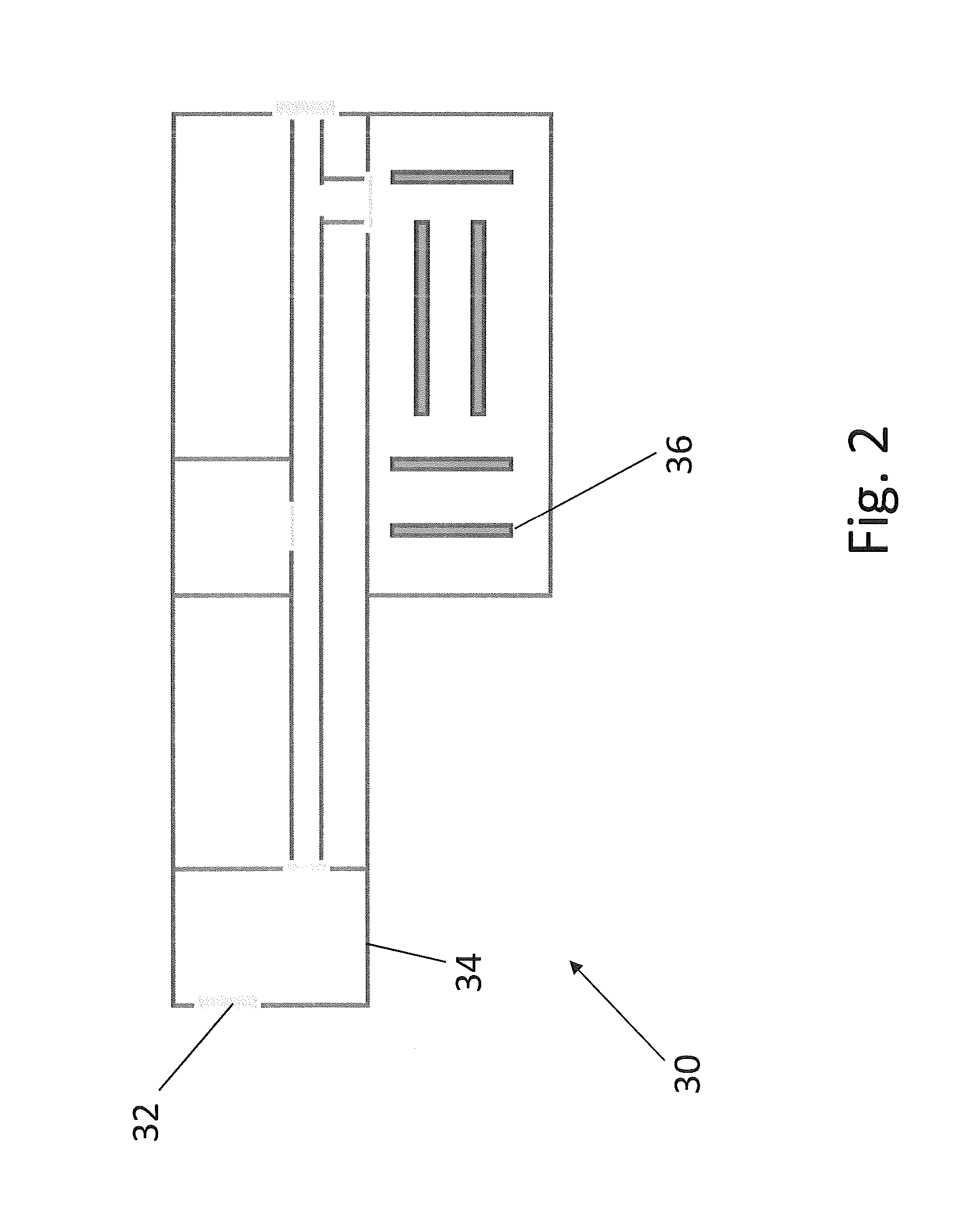Method of estimating position of a device
a technology of positioning device and position, applied in the direction of navigation instruments, instruments, wireless commuication services, etc., can solve the problem of not using data, and achieve the effect of improving the accuracy of existing positioning system
- Summary
- Abstract
- Description
- Claims
- Application Information
AI Technical Summary
Benefits of technology
Problems solved by technology
Method used
Image
Examples
example 1
Positioning Using Electromagnetic Signal Sources
[0269]FIG. 9 shows the device 100 located in an indoor region 120 comprising three electromagnetic signal sources 122, 124, 126. Although the electromagnetic signal sources may be Wi-Fi Access Points, Bluetooth Access Points or any other suitable electromagnetic signal source (e.g. near field communication access point), it will be assumed below that the electromagnetic signal sources are Wi-Fi Access Points (WAPs).
[0270]Electromagnetic signals transmitted by the WAPs 122, 124, 126 typically comprise identifiers (such as their MAC addresses), transmitted signal powers, types and model. The WAPs 122, 124, 126 may also transmit their locations. Accordingly the transmitted signal powers and locations of the WAPs 122, 124, 126 can be determined by the Wi-Fi positioning system module 112 by processing detected signals from the WAPs 122, 124, 126. Alternatively, their locations and transmitted powers may be determined by the Wi-Fi positionin...
example 2
Mapping Electromagnetic Signal Sources
[0285]In this example, the GDDPM 1 is used by the device 100 to determine the positions of electromagnetic signal sources within an indoor region.
[0286]First, the device 100 receives electromagnetic signals from an electromagnetic signal source at three different positions within the indoor region. The device 100 then determines its distance from the electromagnetic signal source at each of the three positions using electromagnetic signal source transmitted power data (e.g. obtained from a database of electromagnetic signal data or from the signals transmitted by the electromagnetic signal source if available) and electromagnetic signal propagation characteristics requested from and provided by the GDDPM 1 as described above. The Wi-Fi positioning module 112 of the device 100 can then determine a provisional estimated position of the electromagnetic signal source by triangulation. For example, circles of radius, d (the appropriate values of d be...
example 3
Positioning Using Sensors
[0293]For the purposes of the discussion below, it will be assumed that the sensors module 104 comprises an accelerometer configured to measure a vertical acceleration of the device and a compass (and optionally a gyroscope) for measuring an orientation of the device.
[0294]FIG. 10A is a plot of vertical acceleration data versus time as measured by the accelerometer when a user walks or runs carrying the device 1. The plot shown in FIG. 10A has eight local maxima 130-144 and eight local minima 146-160. Each transition between a local maximum 130-144 and a chronologically subsequent and adjacent local minimum 146-160 is caused by a step taken by the user. Accordingly, the accelerometer can be used as a pedometer, where steps taken by the user can be detected by processing the vertical acceleration data to extract the local maxima and minima. However as shown in FIG. 10A, the raw vertical acceleration data measured by the accelerometer also comprises fluctuatio...
PUM
 Login to View More
Login to View More Abstract
Description
Claims
Application Information
 Login to View More
Login to View More - R&D
- Intellectual Property
- Life Sciences
- Materials
- Tech Scout
- Unparalleled Data Quality
- Higher Quality Content
- 60% Fewer Hallucinations
Browse by: Latest US Patents, China's latest patents, Technical Efficacy Thesaurus, Application Domain, Technology Topic, Popular Technical Reports.
© 2025 PatSnap. All rights reserved.Legal|Privacy policy|Modern Slavery Act Transparency Statement|Sitemap|About US| Contact US: help@patsnap.com



